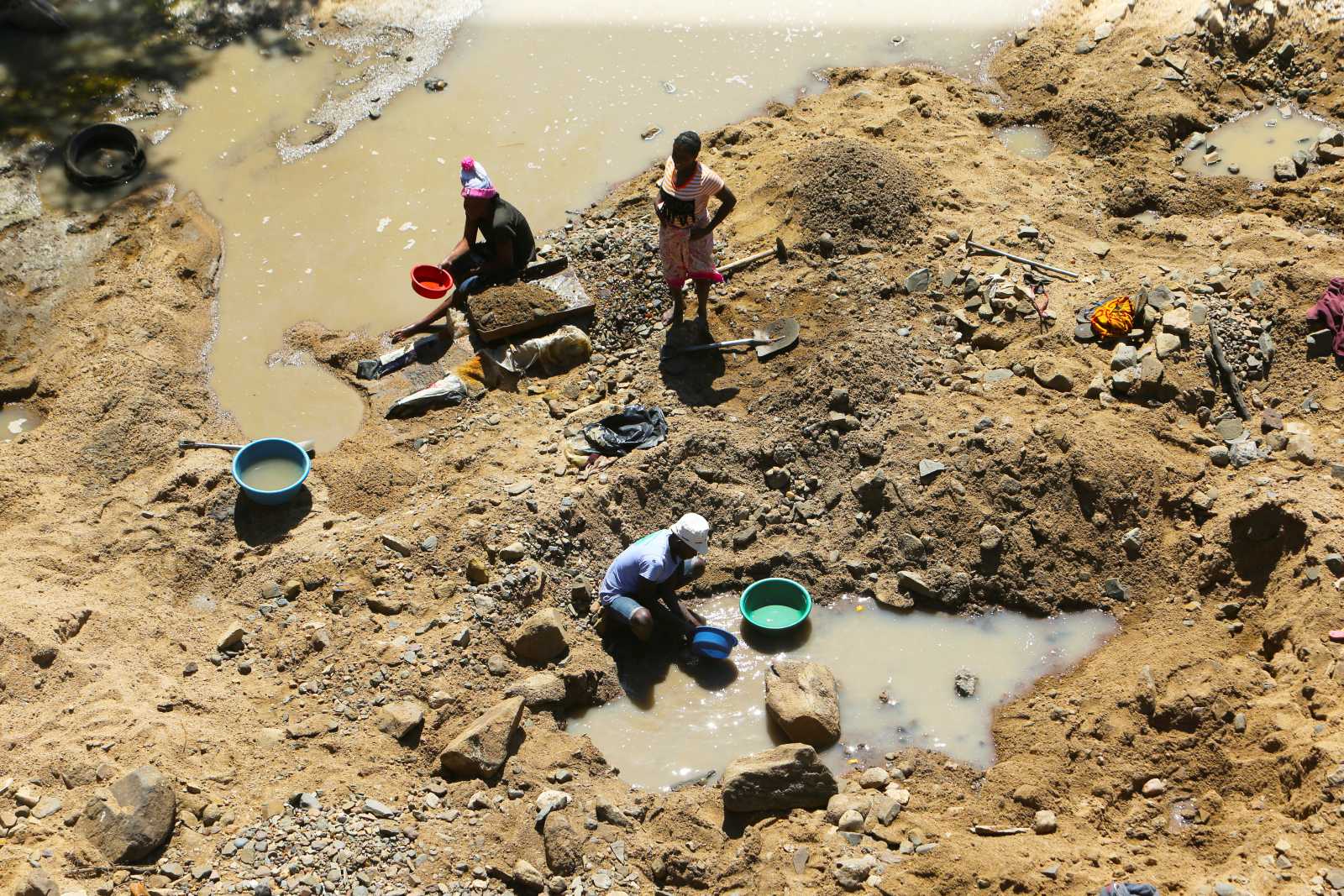Greenhouse effect
Additional challenges
[ By Manfred Konukiewitz and Laura Schmidt ]
Developing countries are particularly vulnerable to the impacts of the greenhouse effect. Three factors determine the degree of vulnerability:
– exposure (the intensity of change brought about in a country),
– sensitivity (the consequences of that change), and
– adaptive capacity (the possibilities of coping with those consequences and dealing with risk).
On all three counts, the need for action is particularly acute in poor countries. Unlike most industrial countries, which are situated in temperate zones, they are highly exposed because of their geographical location. In the tropics and subtropics, extreme weather conditions such as cyclones or droughts are more frequent and more intense. In its fourth assessment report in 2007, the Intergovernmental Panel on Climate Change (IPCC) forecasts that the intensity and frequency of such events will increase.
Many developing countries are also particularly vulnerable since their economies depend on weather-sensitive agriculture. What makes matters worse is that a large share of the population of the developing world lives on subsistence farming. These people do not have the disposable income to fall back on imported foodstuffs. Their income and food situation will become more precarious. Due to increasing scarcity of water, it is estimated, for example, that nine percent of all arable land in Africa will be lost by the end of the century.
The majority of developing countries also lack adaptive capacity. For one thing, they do not have the financial resources needed to fund major programmes; for another, they are often short of professional resources and effective institutions. This is particularly so where political conditions are unstable or states are fragile.
According to the IPCC, vulnerability is particularly high in the following regions:
– the whole of Africa because of the intensity of anticipated climatic impacts and low adaptive capacity,
– the small island states, whose very existence is threatened by rising sea levels, and
– the densely populated delta and coastal regions of Asia and Africa, which are already exposed to floods and storms.
At the global level, long-term temperature scenarios are becoming more precise, making it possible to predict the effects of climate change with increasing reliability. Regional and local forecasts are less accurate, however, because the data available is insufficient. A north-south divide is apparent as rich nations have much better data than poor countries. It is obvious, however, that adapting to global warming must be a feature of any sensible development strategy today. The need for action is immense (see page 456).
Coherent strategies
Adaptation to climate change is a new challenge, but must not be understood as a separate sector of intervention. Rather, coherent development strategies which pay attention to climate risk are the order of our time. Such strategies will increasingly be marked by “adaptive” features.
The greenhouse effect must be understood as an overarching factor in policy-making. In developing countries, governments and civil society need help in developing long-term adaptation strategies which sensibly supplement and support their commitment to fighting poverty and its causes in the context of national economic development.
Adaptation is not only a task for developing countries. Germany’s Federal Government is currently working on a strategy to ensure that all line ministries take account of climate change in future policymaking. Developing countries, however, depend on international support. The industrialised countries are the ones mainly responsible for causing the climate change problem; and they pledged support to developing countries in the United Nation context as early as 1992.
For German development agencies, climate change has become a priority area of support in which they can draw on considerable past expertise. One key activity is to provide policy and technical advice to partner countries integrating climate information and risk into their development planning. In India, for example, a joint programme with the Central Government is looking into how to take account of climate change in development planning and investment decisions for rural
areas. In Tunisia and Indonesia, support was provided to drafting national adaptation strategies in the water and agriculture sectors.
Overall, the makers of development policy must pay increased attention to
– reducing people’s political and socioeconomic vulnerability, and
– strengthening their individual and collective adaptive capacities.
Relevant factors, as in the fight against poverty, include income, access to land and credit, education, employment, health services and so on.
Moreover, German development agencies are currently developing a “climate check” tool, which in future will ensure that measures
– promote climate-friendly development,
– take account of the effects and risks of the greenhouse effect, and
– make a maximum contribution to strengthening adaptive capacities.
In 2006, the eminent economist Nicholas Stern, on behalf of the UK government, released a report assessing the impact of climate change on the global economy. One of the main conclusions was that it will be expensive but nonetheless necessary to meet ambitious emission reduction targets. After all, the cost of adaptation will certainly exceed those of reducing emissions as adaptation needs will escalate the more climate change progresses.
Financing
In the meantime, numerous studies have estimated the costs of adaptation in developing countries. According to the UN Climate Secretariat, additional costs will be in the range of $ 28 to 67 billion per year by 2030. Some of that money will come from government budgets and some from private-sector investment. But these two sources will not do. Multi- and bilateral assistance will also be needed.
However, the money available at present falls far short of the foreseeable high requirements.
– The Global Environment Facility (GEF) currently manages climate adaptation funds and programmes with an aggregate volume of around $ 300 million.
– As of next year, another $ 80 to 300 million a year will be made available by the UNFCCC Adaptation Fund, which was decided upon at the climate change conference in Bali and is funded through a two-percent levy on projects implemented according to the Kyoto Protocol’s Clean Development Mechanism (CDM). The volume of funds will thus depend on how carbon markets develop.
– The World Bank’s recently approved Climate Investment Fund will finance adaptation activities in the range of $ 500 to 1,000 million.
– Further resources for adaptation will be made available by the World Bank subsidiary IDA (International Development Association), which grants concessionary loans to the world's poorest countries.
Germany is one of the biggest contributors to the GEF and the World Bank. Moreover, Germany’s Federal Government provides considerable bilateral resources for boosting adaptive capacities in developing countries. In the water sector alone, the Federal Ministry for Economic Cooperation and Development (BMZ) made budgetary provisions worth around €170 million for relevant projects this year.
In the 2009 draft budget, the Federal Government has earmarked a total of € 5.7 billion for development cooperation, and is thus on track to fulfil its obligations to increase ODA to 0.51 % of GNP by 2010 and 0.7 % by 2015. This includes around € 100 million from the auctioning of emission rights under the European Emission Trading System. Additional funds from this innovative financing instrument are used by the Federal Environment Ministry for international climate protection (including adaptation measures).
International support for adaptation will thus be provided primarily by those bodies that, so far, have been funding development. It is essential that developing countries themselves assume responsibility for adaptation policies. Setting priorities and ensuring coherence are tasks that need to be carried out in the national context.
Sadly, however, many governments still see adaptation as a purely environmental issue. That must change if sufficient long-term funding is to be mobilised and coordination of efforts ensured.
Outlook
The member states of the UNFCCC are currently discussing a far-reaching international climate-change agreement beyond 2012, the end of the first commitment period of the Kyoto Protocol. The Bali Action Plan, the negotiating mandate approved at the Conference of the Parties late last year, puts adapting to climate change on a par with reducing greenhouse emissions. One focus of the negotiations is cooperation between industrialised and developing countries. As adaptation support to developing countries needs to increase considerably, this topic is equally becoming a core issue of development finance.
Agreements need to be reached on financial requirements, sources of funding and expenditure. Moreover, governments hold diverging views on priorities and on the architecture of climate financing. It needs to be defined what roles and responsibilities the various actors are to assume – including the UN agencies, the Bretton Woods institutions as well as the
governments of the industrialised and developing countries.
Because of the huge need for funding, innovative sources of finance must be found. Proposals that include proceeds from auctioning or trading emission rights are promising in this respect. Germany already provides an innovative example, since proceeds from the auctioning of emission rights are already spent on national and international climate protection.
It is essential to avoid the creation of new bureaucratic structures and channels for pooling and allocating resources. The vulnerability of poor countries to climate change impacts will be reduced most effectively where the experience and the new instruments and mechanisms of development cooperation, as were spelled out in the Paris Declaration on Aid Effectiveness and refined in the Accra Agenda for Action, are
applied.







